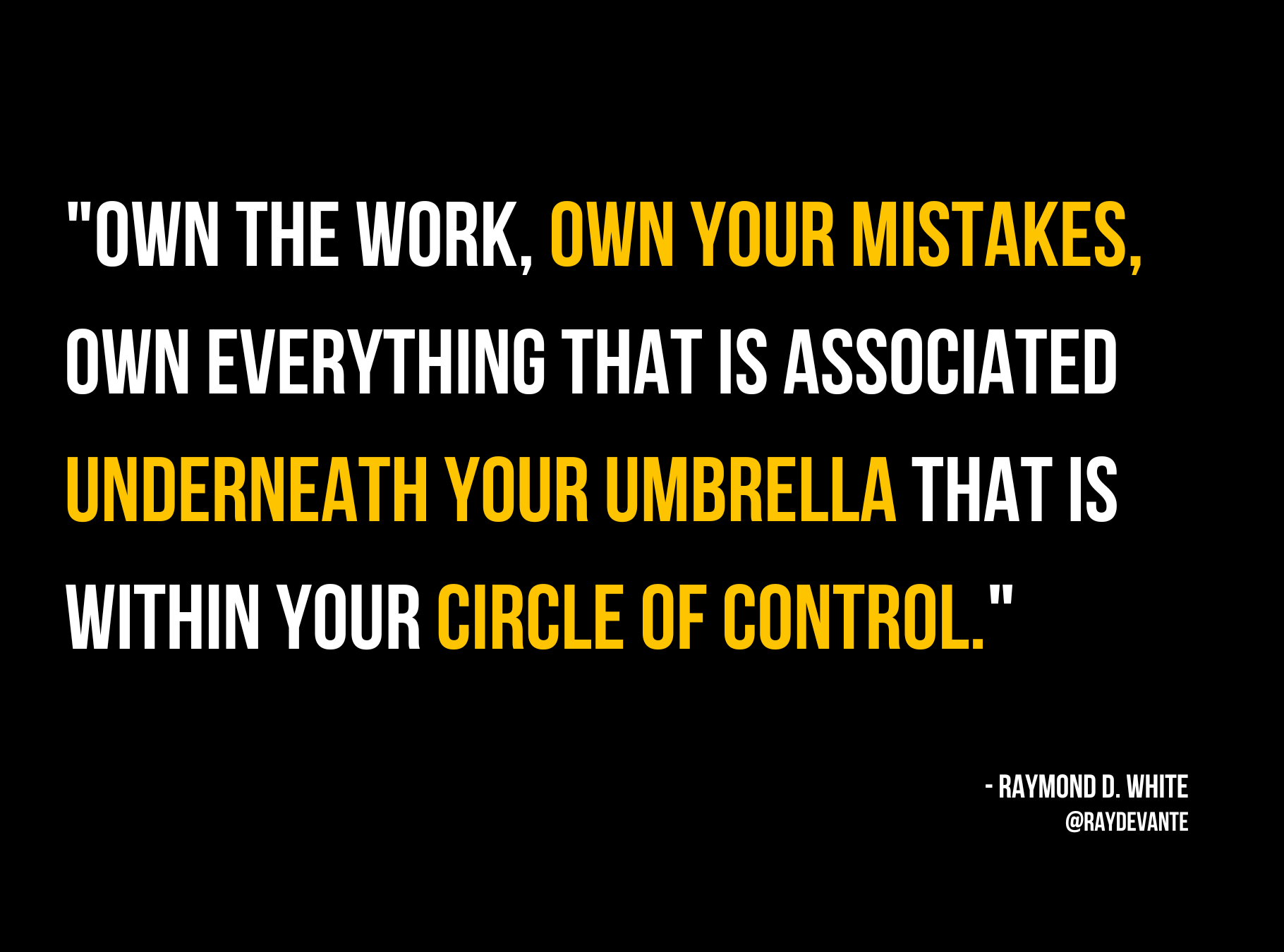How can you connect Accountability and Belonging in the workplace?
I am very grateful for sports to teach me the importance of accountability.
My high school football coach would constantly say, "Be where you are supposed to be, do what you are supposed to do." This was an encouragement to know our assignments and execute them at a high level. It also meant that if we were out of alignment, it was on us to own the mishap and then see what we could do better next time.
This taught me that I needed to control what was within my control as an athlete (knowing plays, lifting weights, watching film, uplifting my teammates). It also highlighted that if I made a mistake, it was on me to correct it. The blame can not go anywhere else.
In today’s rapidly evolving business landscape, fostering a workplace culture of belonging is paramount for executive leaders, directors, and people managers.
Organizations that prioritize employee retention and create an inclusive environment are better equipped to attract and retain top talent. To achieve this, leaders must align their words with actions and embrace accountability as a cornerstone of building a thriving workplace culture.
In this article, we will explore the transformative power of accountability in creating a sense of belonging for employees and provide practical strategies for leaders to implement.
Embracing Accountability in Building a Belonging Workplace Culture
Accountability is often perceived as a daunting concept, as it requires individuals to uphold specific standards and expectations. However, when leaders model accountability, it sets the tone for the entire organization. Just like when my high school football team's motto, “Be where you’re supposed to be, do what you’re supposed to do,” leaders must demonstrate commitment and hold themselves accountable to create a culture of belonging.
Four Ways to Practice Accountability in Creating a Belonging Workplace Culture
1. Accept Responsibility and Own It:
Leaders must take ownership of their actions, decisions, and mistakes. By recognizing their areas of control and influence, leaders can actively address issues and prevent them from recurring. Accepting responsibility not only builds trust among team members but also cultivates a culture of transparency and authenticity.
2. Constantly Learn and Improve:
Accountability goes hand in hand with continuous learning and self-awareness. Leaders should seek opportunities for personal growth through reading relevant books, engaging with experts, or participating in educational programs. By expanding their knowledge, leaders can make more informed decisions and develop a deeper understanding of how to create an inclusive workplace culture.
3. Seek Solutions that are Inclusive and Equitable:
To create an inclusive workplace culture, leaders must acknowledge their blind spots and actively seek diverse perspectives. By involving individuals who have historically been excluded or marginalized, leaders can ensure that their decision-making processes consider the needs and experiences of all employees. This proactive approach fosters an environment where everyone feels valued and included.
4. Follow-Through on Actions:
Accountability demands that leaders follow through on their commitments. If a leader promises to be available for one-on-one meetings regularly, they must prioritize and honor these engagements. By delivering on their promises, leaders demonstrate reliability and build trust within their teams. Additionally, leaders should address biases within hiring practices and take concrete steps to eliminate them, ensuring a fair and inclusive recruitment process.
Moving Forward and Promoting Belonging Workplace Culture
Accountability is an ongoing journey that requires dedication and self-reflection. To create a lasting and impactful culture of belonging, leaders should continually evaluate their actions and strive for improvement. By seeking feedback from employees, leaders can identify areas where they can enhance inclusivity, address any concerns, and take targeted actions to create a more supportive environment.
Accountability is a powerful catalyst for building a belonging workplace culture. By accepting responsibility, constantly learning and improving, seeking inclusive solutions, and following through on actions, leaders can foster an environment where employees feel valued, heard, and empowered to bring their authentic selves to work.
Through accountability, organizations can enhance employee retention rates, attract top talent, and cultivate a culture of belonging that drives success and innovation. By committing to accountability, leaders become agents of positive change, transforming workplaces into spaces where every individual thrives.
Question and Action:
How does accountability contribute to fostering a culture of belonging in the workplace?
Why is accepting responsibility and owning mistakes crucial for leaders aiming to create an inclusive culture?
What strategies can leaders employ to constantly learn and improve their accountability skills?
Action: Identify one area where you can improve your accountability practices. Whether it’s committing to regular one-on-one meetings, seeking diverse opinions in decision-making, or dedicating time to continuous learning, take a specific step within the next week to enhance your accountability.
Share your insights and progress with a colleague or mentor, fostering accountability in your journey toward creating an inclusive workplace culture.
By the way! I wrote a book to help leaders become social justice advocates within their communities!
“Advocacy in Action” is a practical guide for individuals and leaders on the journey to an anti-racist/anti-bias society. The book provides practical actions that readers can take in their current roles to create inclusive communities.
One of my goals is to reframe your mindset to a learning posture that is continuously improving, shedding expectations of perfection and seeing this as a stepping stone on your anti-racist journey.
The book breaks down barriers to joining anti-racist work, develops tactical ways to act, encourages readers on their journey, and provides reflective questions to explore how they can put what they’ve learned into practice.
With a focus on building relationships, analyzing internal and intercultural circles, and seeking accountability, “Advocacy in Action” is a valuable resource for anyone seeking to make a positive impact in their community.





